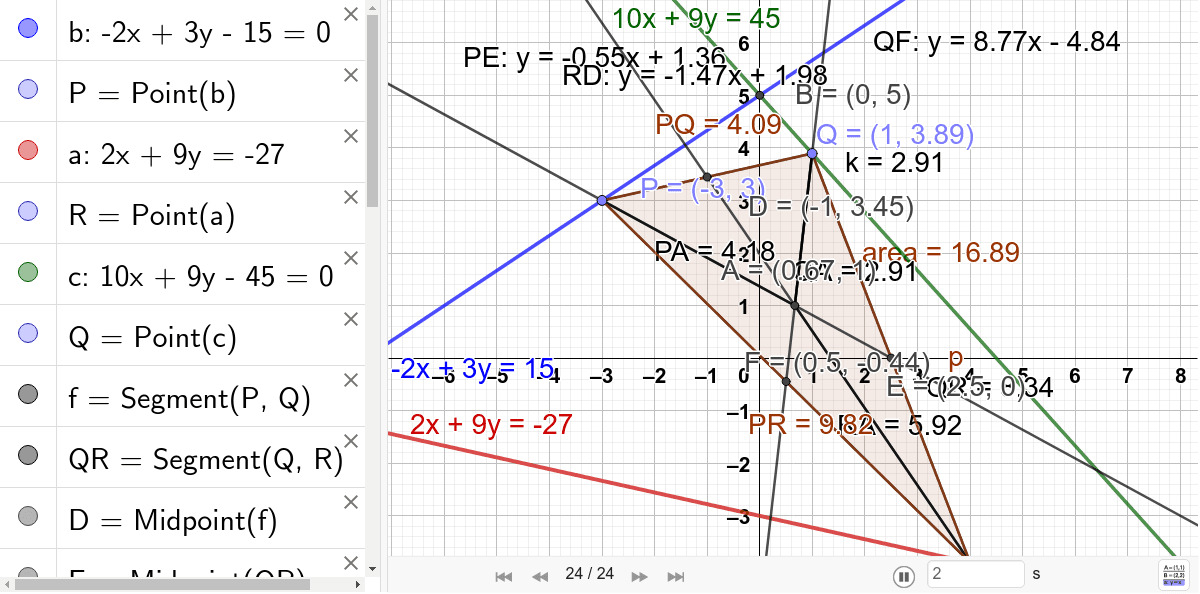
Analytic Geometry blends algebra and geometry, allowing us to solve geometric problems using algebraic equations. Did you know that this field was pioneered by René Descartes in the 17th century? Analytic Geometry helps us understand shapes, lines, and curves by plotting them on a coordinate system. Ever wondered how GPS works or how engineers design bridges? Analytic Geometry plays a crucial role in these technologies. From calculating distances between points to finding the slope of a line, this branch of mathematics is incredibly versatile. Ready to dive into some mind-blowing facts about Analytic Geometry? Buckle up, because you're about to see math in a whole new light!
What is Analytic Geometry?
Analytic geometry, also known as coordinate geometry, blends algebra and geometry. It uses coordinates to represent geometric shapes and solve problems. This mathematical field has many interesting aspects.
- Analytic geometry was developed by René Descartes and Pierre de Fermat in the 17th century.
- It uses a coordinate system to describe geometric figures.
- The Cartesian coordinate system is the most common system used in analytic geometry.
- Points in this system are defined by pairs of numbers (x, y) in a plane.
- Analytic geometry allows for the algebraic representation of geometric shapes like lines, circles, and parabolas.
Historical Significance
Analytic geometry has a rich history that has significantly influenced modern mathematics and science. Here are some historical facts about this fascinating field.
- René Descartes' work "La Géométrie" laid the foundation for analytic geometry.
- Pierre de Fermat independently developed similar ideas around the same time.
- Analytic geometry helped bridge the gap between algebra and geometry.
- Isaac Newton and Gottfried Wilhelm Leibniz used analytic geometry to develop calculus.
- The field has applications in physics, engineering, computer science, and economics.
Key Concepts and Principles
Understanding the core principles of analytic geometry is essential for grasping its applications. Here are some fundamental concepts.
- The distance formula calculates the distance between two points in a plane.
- The midpoint formula finds the midpoint of a line segment.
- The slope formula determines the steepness of a line.
- Equations of lines can be written in various forms, including slope-intercept and point-slope forms.
- Conic sections like circles, ellipses, parabolas, and hyperbolas are studied using analytic geometry.
Applications in Real Life
Analytic geometry isn't just theoretical; it has practical applications in various fields. Here are some examples.
- Computer graphics use analytic geometry to render images and animations.
- Robotics relies on coordinate systems to navigate and manipulate objects.
- Architecture uses geometric principles to design buildings and structures.
- Astronomy employs analytic geometry to map the positions of stars and planets.
- Engineering applies these concepts to design and analyze mechanical systems.
Famous Mathematicians
Several mathematicians have made significant contributions to the field of analytic geometry. Here are a few notable figures.
- René Descartes is often called the father of analytic geometry.
- Pierre de Fermat made early contributions that paralleled Descartes' work.
- Isaac Newton used analytic geometry in his development of calculus.
- Gottfried Wilhelm Leibniz also utilized these principles in his work on calculus.
- Leonhard Euler expanded the field with his work on curves and surfaces.
Modern Developments
Analytic geometry continues to evolve, with new discoveries and applications emerging regularly. Here are some modern developments.
- Computer-aided design (CAD) software uses analytic geometry for precision drawing and modeling.
- Geographic Information Systems (GIS) rely on these principles to map and analyze spatial data.
- Machine learning algorithms often use geometric concepts to classify and predict data.
- Virtual reality (VR) and augmented reality (AR) technologies use coordinate systems to create immersive experiences.
- Cryptography employs geometric principles to secure digital communications.
Fun Facts
Analytic geometry has some quirky and fun aspects that might surprise you. Here are a few interesting tidbits.
- The Cartesian plane is named after René Descartes, who introduced the concept.
- The term "coordinate" comes from the Latin word "coordinare," meaning to arrange or set in order.
The Final Word on Analytic Geometry
Analytic geometry, blending algebra and geometry, has revolutionized how we understand shapes, spaces, and their relationships. From coordinate systems to conic sections, it’s clear this field is foundational in both mathematics and science. Whether you're plotting points on a graph or solving complex equations, the principles of analytic geometry are at play. This subject isn't just for mathematicians; its applications span engineering, physics, computer science, and even art. Understanding these concepts can open doors to new ways of thinking and problem-solving. So next time you see a graph or a geometric shape, remember the powerful tools of analytic geometry working behind the scenes. Keep exploring, keep questioning, and let the wonders of this fascinating field inspire you.
Was this page helpful?
Our commitment to delivering trustworthy and engaging content is at the heart of what we do. Each fact on our site is contributed by real users like you, bringing a wealth of diverse insights and information. To ensure the highest standards of accuracy and reliability, our dedicated editors meticulously review each submission. This process guarantees that the facts we share are not only fascinating but also credible. Trust in our commitment to quality and authenticity as you explore and learn with us.
